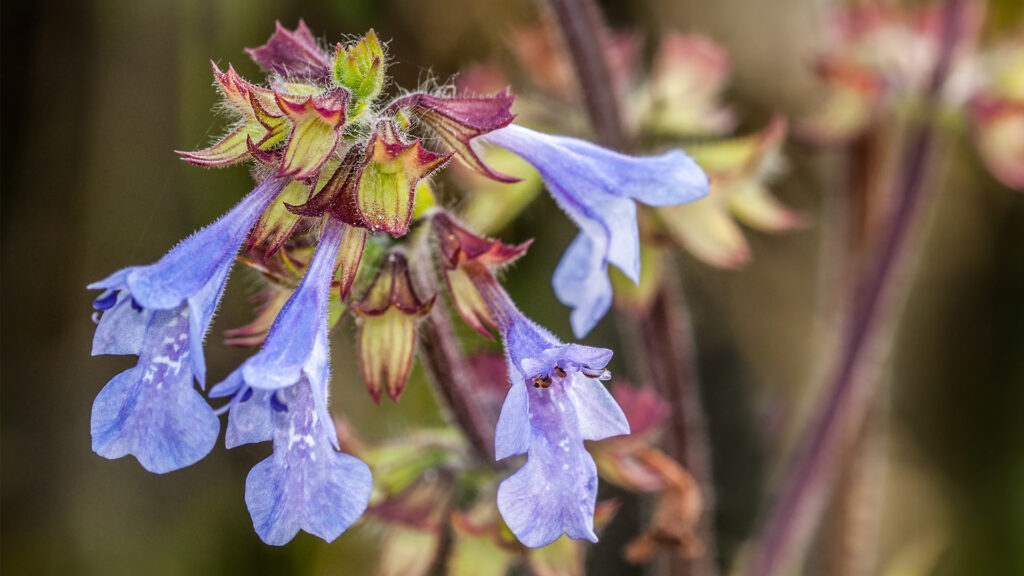By Susan Nugent, Climate Reality Project member
Spring is my favorite time of year in Florida. Every day something new is blooming in our gardens, along the highways and on our hikes.
Recently the lyreleaf sage beautified my yard, adding purples to the already colorful pallet of the orange flame azalea, red salvias and yellow groundsel. Besides color, these native plants enrich our garden’s power to survive a changing climate.
Natives can adapt easier than exotics or hybrids. Exotics and hybrids need babying to survive drought or they require irrigation changes to face heavier rains. But natives can survive droughts and rains much more easily.

Hybrids have been bred for specific reasons, such as color or specific water conditions. But as our climate changes, our weather becomes far less predictable. This past winter was rainier than usual while early last summer produced drought conditions. Such change causes problems for exotics and hybrids.
The ability for native plants to adapt means they are more healthy for our yards. Once established, the native plants flourish without additional watering, fertilizing or spraying to flourish. While I water potted plants in the front of my home, the beauty berry, firebush, necklace pod and spiderwort planted in the ground never get additional attention.
Native plantings lower water bills and need far less fussing in other ways. I can abandon fertilizer, an action good for everything downstream. Fertilizer has been identified as one of the primary causes of increased nitrogen in our waters. It promotes algae in our lakes and ocean.
Not spraying my yard with chemicals is a direct benefit to me, my family and the pollinator population. Pesticide personnel wear tall boots for a purpose. Those sprays don’t just kill the unwanted bugs around the property but also kill bees and other beneficial insects including lady bugs and butterflies.Although those who spray believe that sprayed pesticides are only dangerous for 24 hours, insects that pollinate our food supply can quickly succumb to these poisons.
Natives in our landscapes also provide food for wildlife. Research shows that some hybrids do not produce the nectar, pollen or fragrance of natives. But our bees rely upon pollen and nectar, birds raid the berries on trees and deer browse nearly every plant they find.
Since I don’t have a fence, I’m the only one in the neighborhood with deer bothering my plants. Long ago, I decided I would really rather have a fawn playing in my backyard than an untouched landscape. Fences are for those who prefer unnibbled, perfectly shaped Walter’s viburnum or oak leaf hydrangea.

My neighborhood has embraced “No Mow March.” Across the street one neighbor has beautiful powder-puff mimosa blooming during this past March. Many other neighbors have not mowed the lyreleaf sage previously mentioned
Frogfruit often decides to join the lawn area whether or not we plant it. It is one of several butterfly host plants that can be used as ground covers. Not mowing in March also gives pupa that have hidden in winter leaves a chance to progress in their metamorphoses.
As we face the challenges of climate change, native plants assist us in several ways, from adapting to unpredictable weather to requiring less fertilizer; from benefiting our pollinators to lowering our water bills; from providing wildlife food to adding to Florida’s beauty.
Meeting the standards of the Florida-Friendly Landscape guidelines requires that gardens must have 25% native plants. All of us would benefit if we set a native goal for our landscapes. The climate and our environment depend upon us taking action now.
Susan Nugent is a Climate Reality Project leader from Gainesville.
Sign up for The Invading Sea newsletter by visiting here. If you are interested in submitting an opinion piece to The Invading Sea, email Editor Nathan Crabbe at ncrabbe@fau.edu. To learn more about methane and other greenhouse gases, watch the video below.



